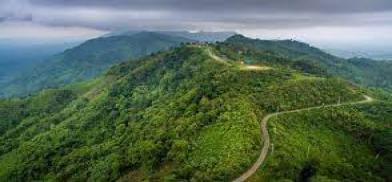Peace propels development in Bangladesh's once-troubled Chittagong Hill Tracts
The development of tribal people in the Chittagong Hill Tracts is much better than any remote region of Bangladesh, writes Hafizur Talukdar for South Asia Monitor

Nearly a quarter century after a peace accord was signed in the Chittagong Hill Tracts (CHT) to end long-running violence, the hills are seeing a rapid pace of development, with the economy gaining momentum in the largely tribal areas. Various development projects undertaken by the government have changed the economic condition of millions in the mountainous, once-troubled and violence-scarred region in southeastern Bangladesh
Earlier, tourists were afraid to go to the hill districts. Tourists now flock to the mountains without any hesitation as the security situation has improved. In the past, due to poor communications, there was not much trade and commerce. That situation has changed. The successful political end of the CHT problem is considered a rare but laudable achievement for Bangladesh.
Agreement implemented
The then Awami League government tried to establish peace in the hills. This was followed by the surrender of arms in 1997 and later became known as the Chittagong Hill Tracts Agreement or Peace Accord. The government claims that most clauses of the agreement have been implemented. The rest will be implemented quickly.
Since the dawn of peace, several schools and colleges have been set up including Rangamati University of Science and Technology and Rangamati Medical College. Sajeke in Baghaichhari has been built for tourists.
Earlier, fishermen could not fish in Kaptai Lake. Now fishermen can fish as they wish. The lake plays an important role in the economy. Now the government collects revenue of around Tk 10 crores every year from the lake. Thousands of families in Rangamati depend on the lake for a living.
Booming economy
Zoom crop production has increased in the hills. New roads help farmers to easily sell them in the market. The timber business has recorded rapid improvement.
Laxmidhan Chakma, a resident of Rangamati, said that thanks to the spread of education, the educated and meritorious children of the hill tracts now easily get government jobs. This was unthinkable before the peace pact.
Ten new development projects have been undertaken in the hills. The Ministry of Chittagong Hill Tracts has sent a proposal to the Planning Commission for inclusion in the Green Leaf in the Annual Development Program (ADP) for 2021-22. At the same time, the allocation has been sought for 19 ongoing projects.
Construction of a Master Drain in the development of the water system in Bandarban Municipality and Lama Municipality of Bandarban Hill District is to be implemented by 2023. Besides, the development of various rural roads is ongoing in Bandarban.
Several other roads have also been planned in the region.
Peace and literacy
Similarly, attention has been paid to cotton cultivation, improving power supply through solar panels, providing safe water supply, constructing irrigation drains, and putting up tube wells in rocky areas. Coffee and cashew cultivation is going on.
The Peace Accord recognized the special status and dignity of the hill people. Under it, a regional council comprising local government councils of the three hill districts has been formed. The agreement called for a Ministry of Tribal Affairs to oversee activities. If the land ownership rights of the tribes are determined, then their land will be returned.
Today Chakmas have an average literacy rate of 96 percent. The quota system in all jobs is much better than in any remote region of Bangladesh.
(The writer, a researcher, has a Master’s degree in International Relations from Dhaka University. The views expressed are personal. He can be contacted at sbarkatbarkatss@gmail.com)









Post a Comment